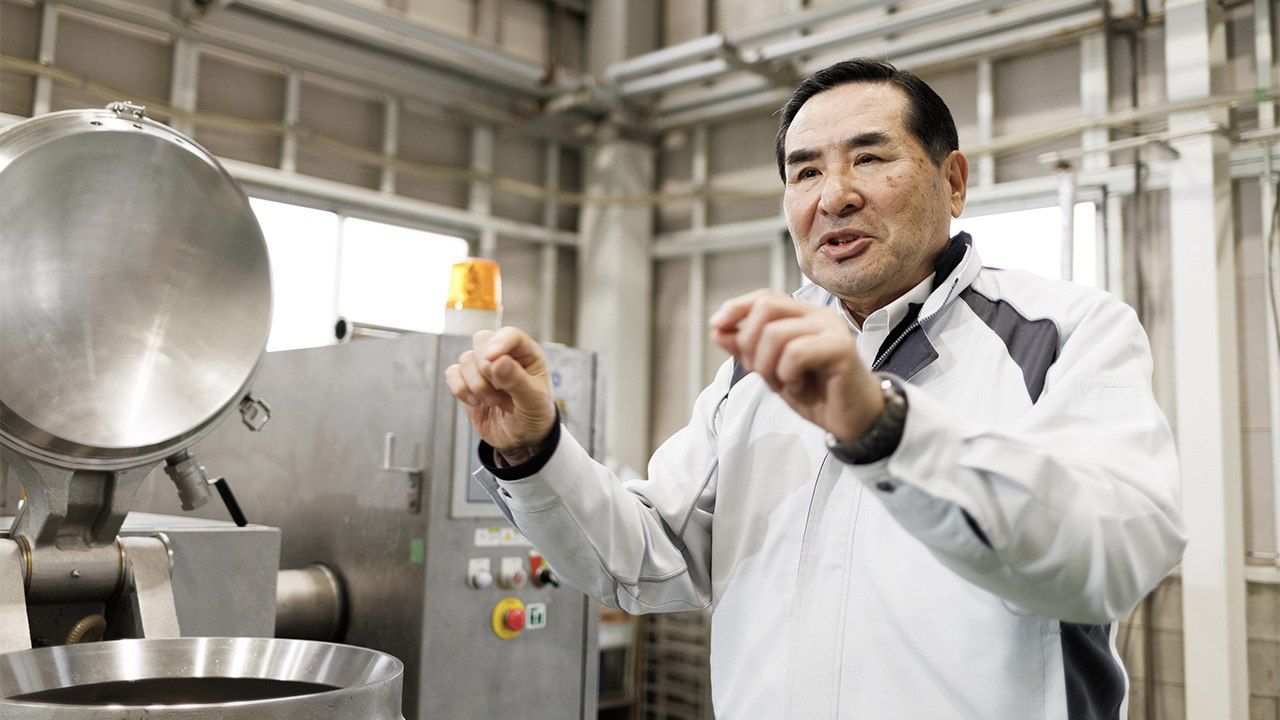
Yanagiya Machinery: The Real Deal in the World of Faux Fish Products
Economy Food and Drink- English
- 日本語
- 简体字
- 繁體字
- Français
- Español
- العربية
- Русский
The Key to Success in a Niche Industry
“Between 600,000 and 700,000 tons of imitation crab meat are produced each year globally,” says Yanagiya Yoshio, head of Yanagiya Machinery. “But this only represents a few hundred production lines—it’s not actually such a big market. We may have a large share of that market, but it was really just a case of becoming well-known in a niche,” he laughs.
Yoshio might laugh off the achievement, but his business—the leading global producer of equipment used to make faux crab and other forms of surimi, with some seven tenths of the market in its grasp—is trusted by clients around the world. Every item of processing equipment is made to order on the basis of detailed design plans drawn up in consultation with clients. Yanagiya-engineered equipment has been installed in factories in over 20 countries, and Yanagiya also applies the expertise in kneading, mixing, and slicing it gained in the development of surimi production technology to the engineering of production lines for nonfood commodities like drugs, cosmetics, and paint.
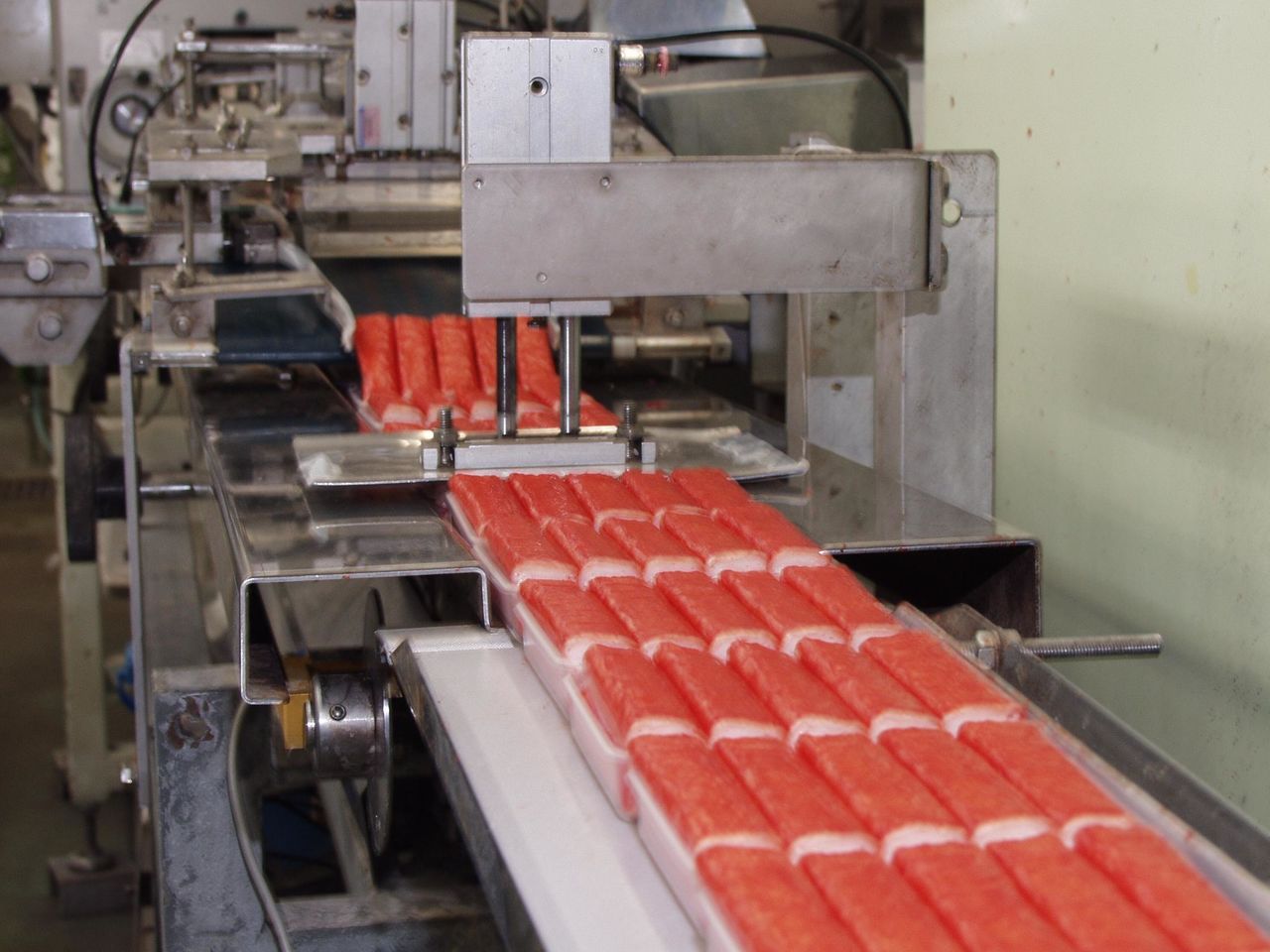
A surimi production line. (Photo provided by Yanagiya)
In 2022, Yanagiya and major Japanese toiletries manufacturer Lion codeveloped a robot capable of automatically blending the powders and flavoring used in toothpaste—a product where varying the flavor dose by a mere thousandth of a gram can significantly change the taste. By controlling production with a high degree of accuracy, the robot has successfully automated a process that formerly required considerably more time and concentration.
“Most of our solutions start with the client describing an idea for a machine and asking us if we can build it. Other small businesses would refuse a brief that lies outside their expertise, but at Yanagiya, we tell the client we will consider their request. We then discuss the matter as a team to see how it can be accomplished,” says Yoshio.
This approach means that Yanagiya develops a new type of machine almost every month. While confidentiality agreements prevent Yoshio from sharing the specifics of what it creates for its clients, he says that many of the processed snacks, delicatessen products, toiletries, and sundries sold in Japanese convenience stores and pharmacies are produced on production lines engineered by Yanagiya. And while the manufacture of production equipment for crab sticks and other processed seafood products represents Yanagiya’s core business, the company is progressively broadening its sphere of operations. Yoshio likens the strategy to the making of konpeitō sweets, in which what start out as small balls of sugar develop spikes in certain areas over time.
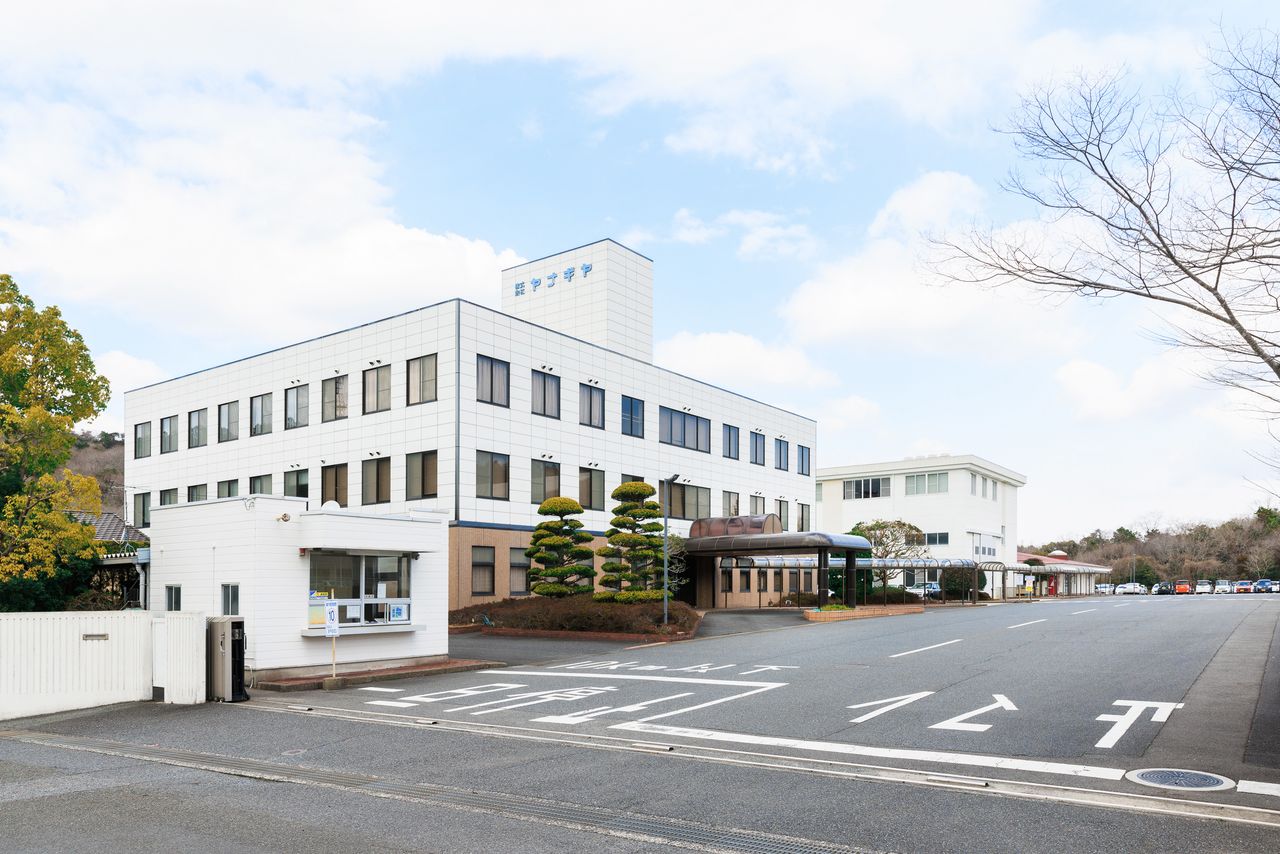
Yanagiya’s Yamaguchi Prefecture headquarters. (© Hidaka Yasunori)
A Change in the Company’s Fortunes
Established in 1916 in Yamaguchi Prefecture, Yanagiya initially sold kamaboko, which it produced by hand-kneading pureed fish. It was company founder (and Yoshio’s grandfather) Motosuke who had the idea of mechanizing the labor-intensive process. Inventing a machine that would uniformly combine and press the fish, Motosuke opened the Yangiya Tekkōjo (literally “Yanagiya Ironworks”) in 1932. While the business sustained damage in World War II, it grew into a manufacturer of equipment for making processed fish.
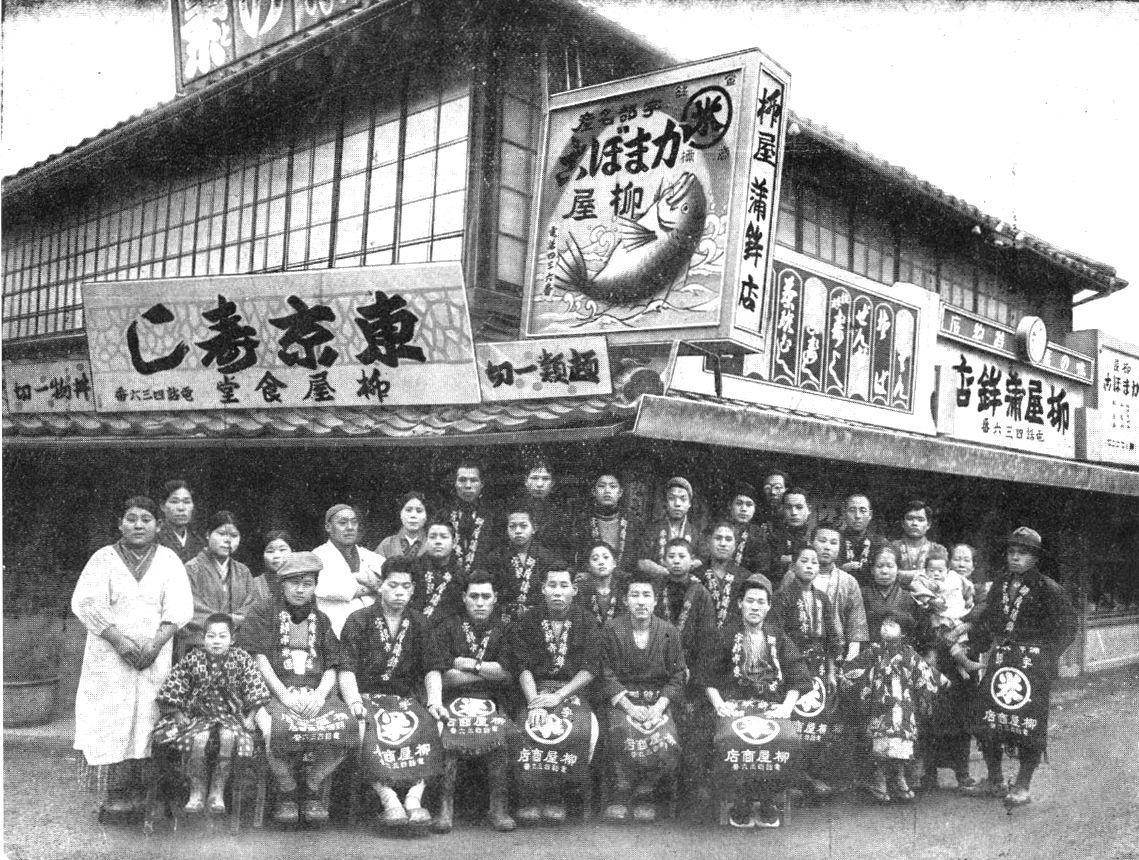
This kamaboko store was the forebear of the modern-day Yanagiya Machinery. (Courtesy of Yanagiya)
While Motosuke’s son expanded the business by opening additional branches and factories, the business later fell into decline, which was exacerbated by the oil crises of the 1970s. When the second-generation head fell ill, his son, Yoshio, became the company’s third CEO at the age of 24.
“Orders were falling, our company culture and technical prowess were in decline, and it was getting hard to retain staff. We had fallen out of favor with the bank as well. We were a textbook company in decline,” says Yoshio.
To escape from this predicament, the first thing Yoshio did as CEO was to kickstart the business by driving from city to city in a truck to visit clients. The strategy paid off: Clients said to Yoshio and his team, ‘seeing as you’ve come all this way, we might as well buy what you have to sell,’ and sales gradually began to recover. It was in the course of this hard slog that Yoshio realized the potential of surimi.
“It felt like the beginning of a crab stick boom. Clients would ask us to build specific pieces of equipment. We had no idea how to go about it, so were forced to start from scratch and brainstorm ideas,” says Yoshio.
The first imitation crab sticks were a flake-shaped product produced by Ishikawa-based Sugiyo called kaniashi (“crab legs”). These evolved into stick-shaped products characterized by bundled fibers, which were a hit. More manufacturers then started making crab sticks, which further fed the boom.
When designing their first production line, the Yanagiya team first bought commercially available surimi and discussed how they could re-create its springiness and texture. Drawing on expertise gained with kamaboko and their knowledge of minced products, Yanagiya completed the production line around a year later, in 1979.
The company continued to look for ways to make its crab sticks even tastier and more realistic. They hit on the idea of pulling Alaska pollock flesh (the raw ingredient in surimi) into thin sheets and steaming, slicing, and binding it. At least, that was the idea, but re-creating the texture of real crab proved difficult.
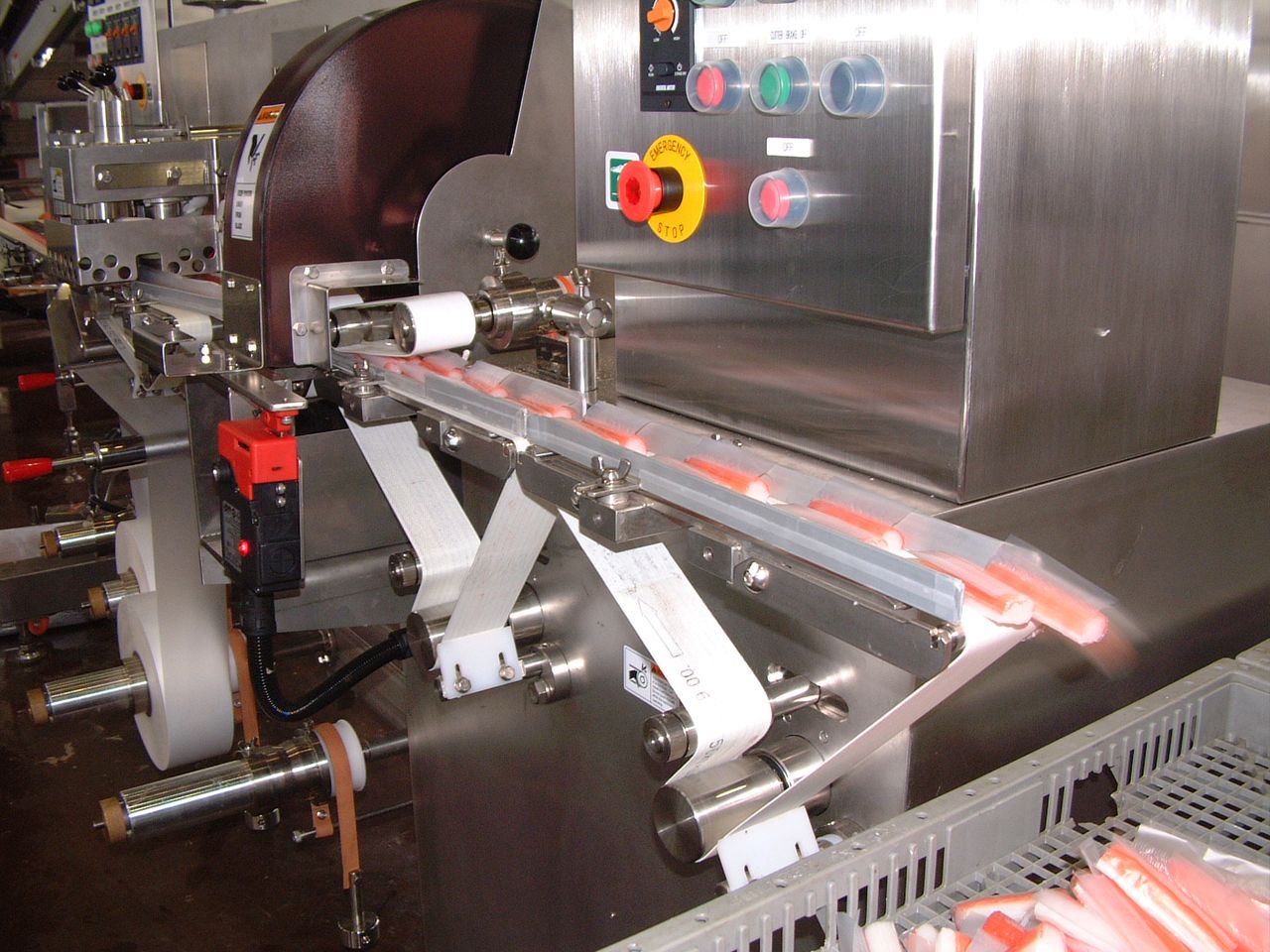
Surimi manufacturing lines have undergone significant technological advancement. (Courtesy of Yanagiya)
Yanagiya focused on the fact that the fibers in real crab meat run diagonally. Working with Hyōgo-based Yamasa Kamaboko, Yanagiya’s engineers came up with a way to make surimi more closely resemble actual crab flesh by cutting bundles of fibers into short diagonal sections, arranging them end-to-end in alternating directions, then binding them together by applying pressure from above. Yanagiya was able to create a flavorful product that would melt in the mouth. Later, production line designs became more energy- and space-efficient, applying short bursts of intense heat to make the surimi fibers more defined when cut. The current machines allow fine control of temperature and humidity, thereby enabling various types of surimi to be manufactured in response to customer requests.
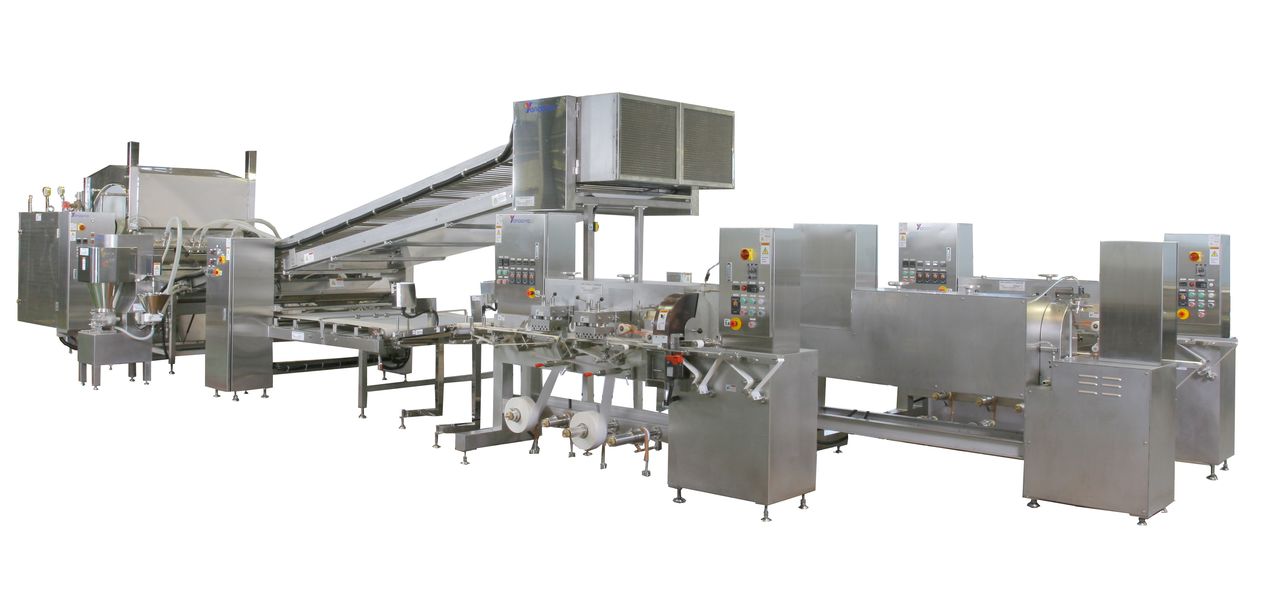
A surimi production machine. (Courtesy of Yanagiya)
Taking Business Global
Japanese faux crab has good color and goes well in salad. When Japanese manufacturers began exporting the product, it created a global healthy seafood boom, which Yanagiya’s manufacturing equipment capitalized on.
“We initially just accompanied surimi producers when they visited their clients. At that time, Japanese kamaboko wholesalers exported their products, which sold well overseas. Our staff would tour overseas sites with these kamaboko manufacturers. In the course of negotiations with local clients, however, the client would say that they wanted to produce crablike surimi onsite, and this led us to jointly develop manufacturing equipment,” says Yoshio.
Yanagiya built its first overseas production lines in South Korea, the United States, Spain, France, Russia, and Thailand. In 1998, Yanagiya opened its Paris office, which served as its European sales and maintenance hub. Using its surimi technology as a foothold, the company then went onto expand into the manufacture of production equipment for other products.
One example is a surimi version of Spanish angulas (baby eels). The imitation eels—called simply gulas—are in high demand as a substitute for angulas, which have become very expensive. Yanagiya built a gulas production line, thereby supporting Spanish restaurants behind the scenes.
Dedication to Service Builds Trust
Yanagiya’s expertise with production-line solutions is not the only thing that earns it trust from its clients. The firm’s attentive after-sales repairs and maintenance service are also a significant factor. When a client asks to have a machine repaired, a Yanagiya rep will be at the site in a matter of days, be it located in Japan or overseas. Even when the COVID-19 pandemic resulted in restrictions on movement and quarantine orders, Yanagiya did not suspend callouts to overseas clients.
“I think of our machines as daughters that have gotten married and left home. It’s only natural to worry about your daughter getting ill. Whether they’re in Japan or in Spain, they’re still our machines, so we will go and maintain them. Location is irrelevant,” says Yoshio.
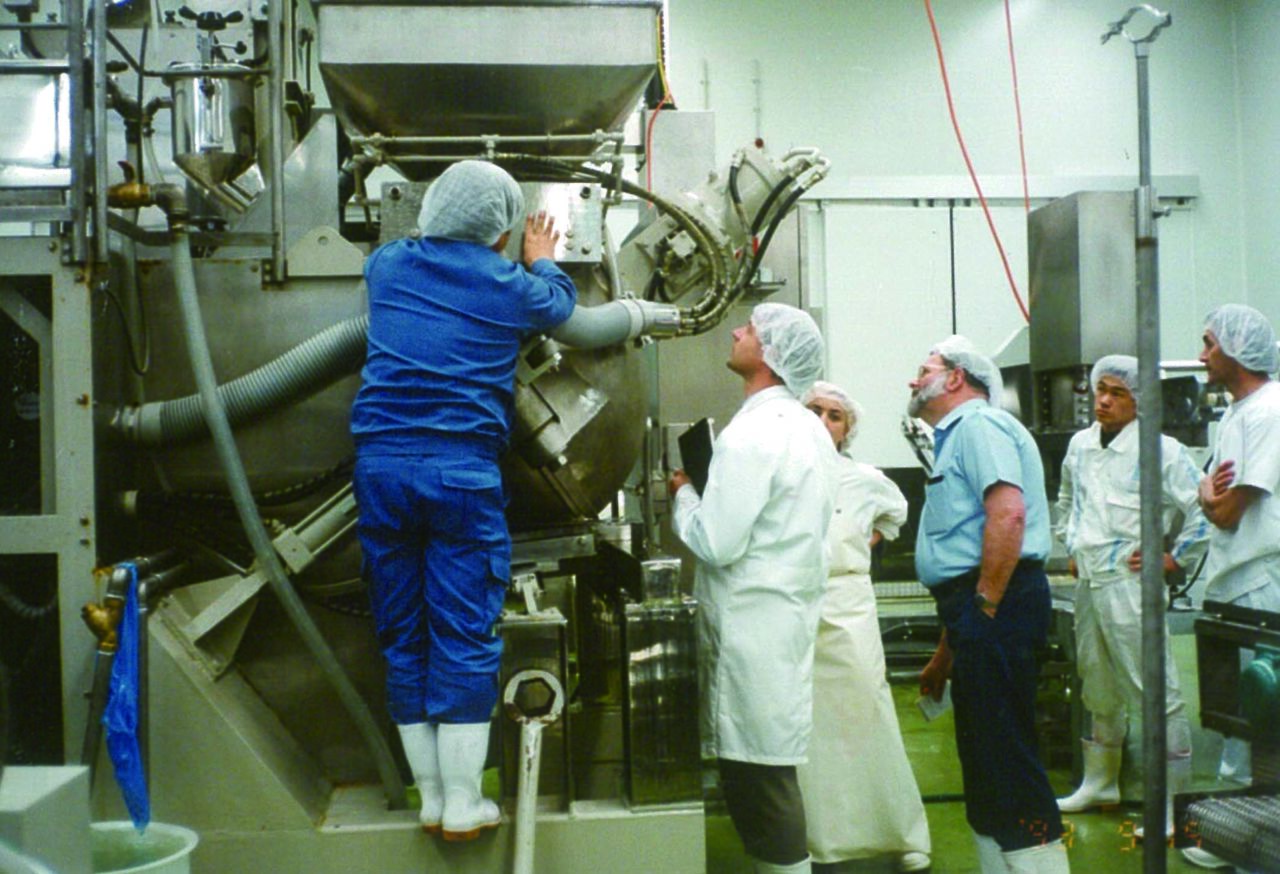
A Yanagiya employee performs maintenance at an overseas factory. (Courtesy of Yanagiya)
This attitude to business has earned Yanagiya a solid global reputation. During the pandemic, stories spread about Yanagiya technicians travelling to client sites when other manufacturers refused, creating a positive energy. Yanagiya does not assign staff to set regions, nor even officially designate repair staff. All staff, including sales personnel and designers, have a certain level of machine knowledge. If a salesperson happens to be in France and a nearby client needs a repair, he or she will go straight to that client’s factory. Generally, whoever is available at the time goes. Yoshio jokes that everyone other than the CEO and the administrative staff is able to repair machinery.
Anything Could Happen Next
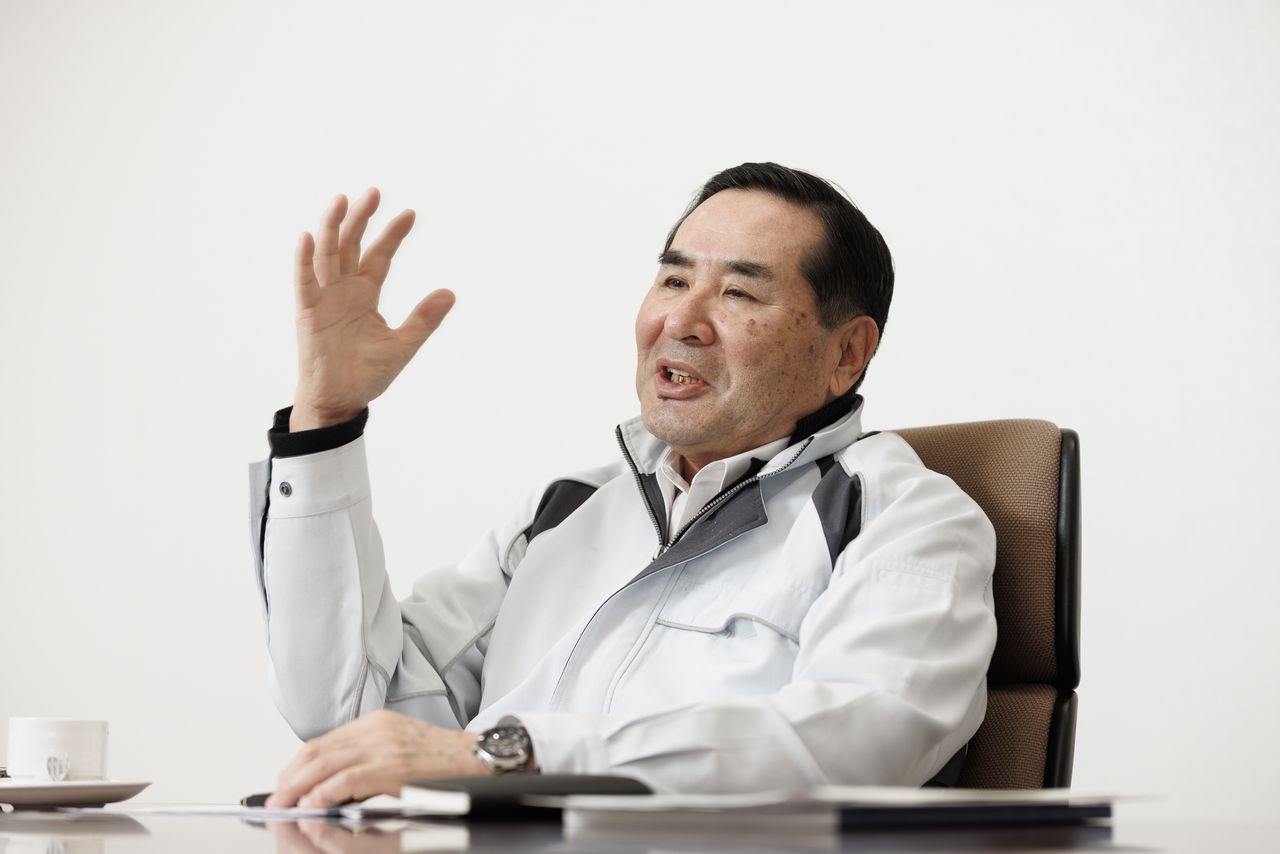
Yanagiya Yoshio jokingly describes his company’s philosophy. (© Hidaka Yasunori)
Yanagiya takes what Yoshio describes as a konpeitō approach to its business. While, like a konpeitō sweet, the business has become more developed in certain areas, Yanagiya does not set or focus on specific targets. Unlike many businesses, Yanagiya has no medium-term plan.
“I have a fair idea of what will happen one year in the future, but beyond that is anyone’s guess. There’s no sector that we won’t work for and no sector that we work for exclusively, either. We don’t know which industries will be our main source of work in one year’s time. I believe it’s better to have a flexible business strategy,” says Yoshio.
Rather than trying to predict the future, Yanagiya concentrates on providing solutions that meet the requirements of its current customers. To this end, it attends trade shows, which allow it to display its products to various manufacturers while fielding requests from a wide variety of industries. What starts as casual chitchat can turn into a proposal to develop a machine for a new client. Yanagiya also accommodates its client’s requirements when it comes to product development and maintenance. It doesn’t focus on boosting turnover or making large investments. It is this “organic” approach that is the secret of Yanagiya’s longstanding success.
Corporate Data
Yanagiya Machinery Co., Ltd.
Address: 189-18 Yoshiwa, Ube, Yamaguchi Prefecture
CEO: Yanagiya Yoshio
Business: Development and sale of equipment for the manufacture of foodstuffs, sundries, pharmaceutical, and other products
Capital: ¥100 million
Number of Employees: 170
Website: http://ube-yanagiya.com/
(Originally published in Japanese. Reporting and text by Kurihara Kenta and Power News. Banner photo © Hidaka Yasunori.)